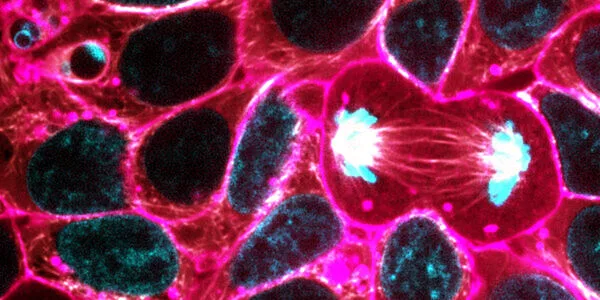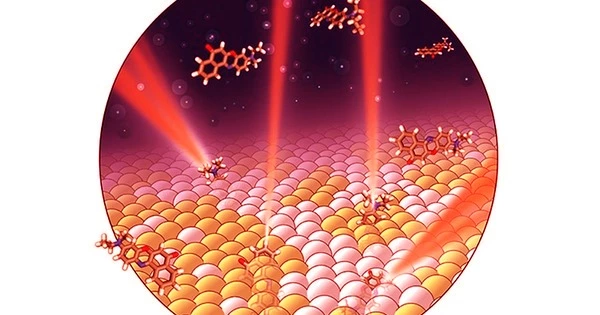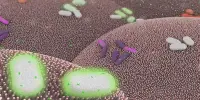The cell membrane, also known as the plasma membrane, is found in all cells and serves to separate the cell’s interior from the outside environment. The cell membrane is made up of a semipermeable lipid bilayer. The cell membrane controls the transport of materials into and out of the cell.
Matthew Lew’s lab at Washington University in St. Louis has discovered entirely new ways to see the very small. The study, which consisted of two papers written by PhD students at the McKelvey School of Engineering, was published in the journals Optica and Nano Letters.
They have created new hardware and algorithms that allow them to visualize the building blocks of the biological world in ways that were previously impossible. Cells, after all, are three-dimensional objects full of “stuff” — molecules that move around, rotate, spin, and tumble to power life itself.
Tingting Wu and Oumeng Zhang, two PhD students in the Lew lab, use light to peer into the microscopic world in the same way that traditional microscopes do, but their innovations are anything but traditional. People are currently interested in how bright or what color light is when they use it in imaging. However, light has other characteristics, such as polarization.
It’s exciting to see the development of new technology and the ability to see things we couldn’t see before. This unique ability to track both rotation and position at the same time provides him with unique insights into how biological materials interact, such as human cells and pathogens.
Oumeng Zhang
“Oumeng’s work twists light polarization,” said Lew, an assistant professor in Preston M. Green’s Department of Electrical & Systems Engineering. “You can see how things translate (move in straight lines) and rotate at the same time,” which traditional imaging does not.
“It’s exciting to see the development of new technology and the ability to see things we couldn’t see before,” Zhang said. This unique ability to track both rotation and position at the same time provides him with unique insights into how biological materials interact, such as human cells and pathogens.
Wu’s research also provides a new method for imaging cell membranes and, in a sense, seeing inside them. She maps how fluorescent tracer molecules interact with fat and cholesterol molecules in the membrane, determining how the lipids are arranged and organized.

“Any cell membrane, any nucleus, anything in the cell is a three-dimensional structure,” she explained. “This allows us to investigate the entire picture of a biological system. This allows us to see beyond three dimensions in any biological sample — we see the 3D structure plus three dimensions of molecular orientation, yielding 6D images.”
The researchers developed computational imaging technology, which synergizes software and hardware together, to successfully see the previously unseeable. “That’s part of the innovation,” Lew said. “Traditionally, biological imaging labs have been tied down to whatever commercial manufacturers are making. But if we engineer things differently, we can do so much more.”
The plasma membrane, also known as the cell membrane, protects the cell. It also provides a stable environment within the cell, and that membrane serves several functions. One function is to transport nutrients into the cell, while the other is to transport toxic substances out of the cell. Another difference is that the cell’s membrane, which is the plasma membrane, contains proteins that interact with other cells. These proteins can be glycoproteins, which have a sugar and a protein moiety, or lipid proteins, which have a fat and a protein. And the proteins that stick outside the plasma membrane allow one cell to communicate with another.
The cell membrane also acts as structural support for the cell. And different types of plasma membranes exist in different types of cells, and the plasma membrane contains a lot of cholesterol as a lipid component in general. This is distinct from other membranes found within the cell. There are now various plants and microbes, such as bacteria and algae, that have different protective mechanisms. They do, in fact, have a cell wall outside of them that is much tougher and more structurally sound than a plasma membrane.
















